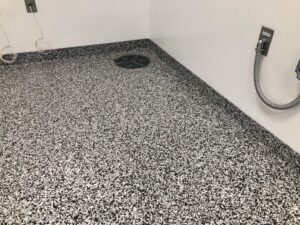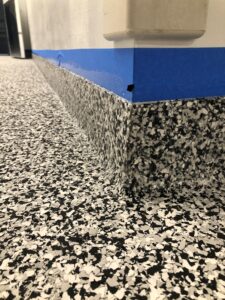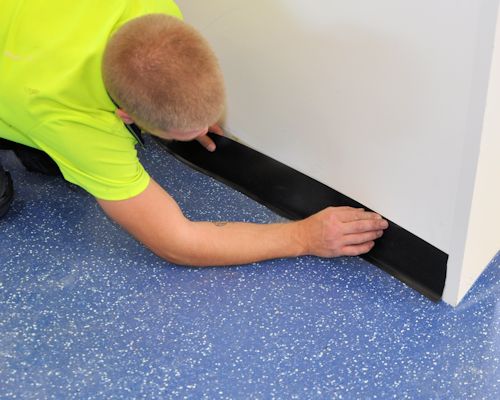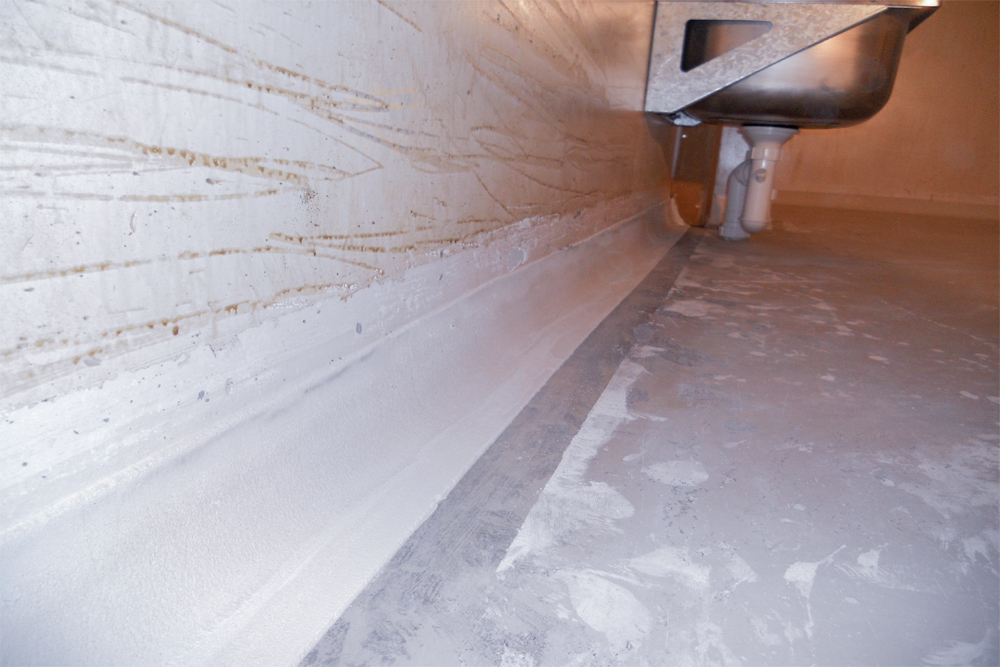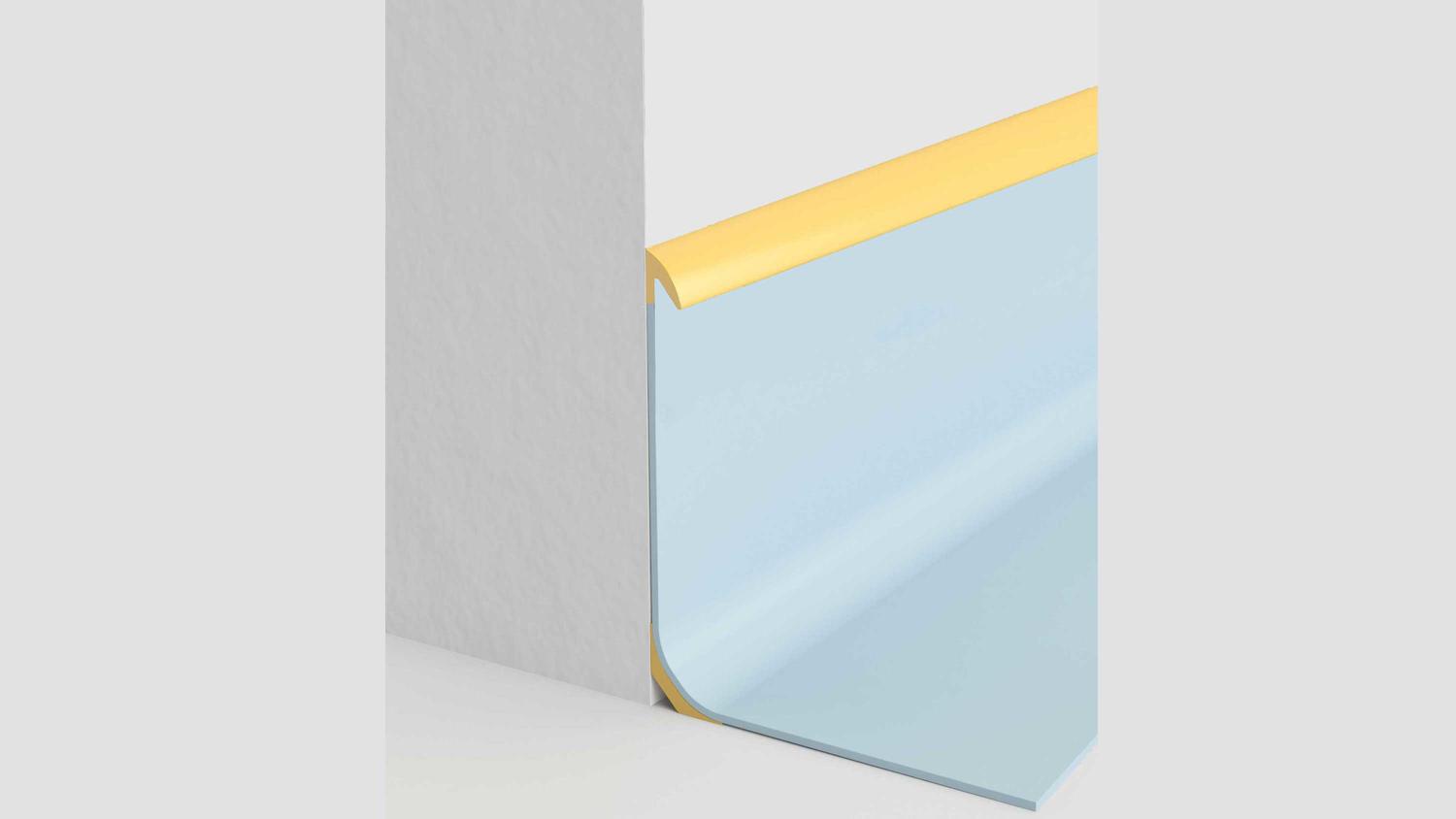I understand the importance of maintaining a clean and hygienic cooking space. And when it comes to cleanliness, the kitchen floor is an area that should never be neglected. This is where kitchen floor coving comes in. I will discuss everything you need to know about kitchen floor coving, its benefits, and how it can be installed.
What is Kitchen Floor Coving?
Kitchen floor coving is a flooring feature commonly found in commercial kitchens but can also be installed in residential kitchens. It is a curved or angled strip of material attached to the floor where it meets the wall. The purpose of the coving is to create a seamless transition between the wall and the floor, preventing dirt, grease, and moisture from getting trapped in the corners.
Benefits of Kitchen Floor Coving
- Hygiene: Kitchen floor coving is important to maintaining a clean and hygienic kitchen. Eliminating the corners between the floor and the wall prevents dirt, grease, and moisture from getting trapped and creates a breeding ground for bacteria.
- Durability: Kitchen floor coving is typically made of materials such as PVC, which are resistant to impact, chemicals, and abrasions. This makes it a durable and long-lasting flooring feature that can withstand a busy kitchen’s daily wear and tear.
- Easy Maintenance: Because kitchen floor coving is designed to prevent dirt and moisture from getting trapped in the corners, it is easy to clean and maintain. A simple wipe-down with a damp cloth is all needed to keep it clean and hygienic.
How to Install Kitchen Floor Coving
Installing kitchen floor coving is a relatively simple process that can be done by a professional or by a DIY enthusiast with some basic tools and skills. Here are the steps involved in installing kitchen floor coving:
- Prepare the Surface: Before installing the coving, the surface of the floor and wall needs to be cleaned and prepared. Any debris, grease, or moisture should be removed to ensure the coving adheres properly.
- Measure and Cut the Coving: Using a measuring tape, measure the wall length where the coving will be installed. Cut the coving to the appropriate length using a saw or a knife.
- Apply Adhesive: Apply a suitable adhesive to the back of the coving, covering the entire surface evenly.
- Install the Coving: Carefully position the coving in place, ensuring it is level and snug against the wall and floor. Press firmly on the coving to ensure that it adheres properly.
- Seal the Joints: Once the coving is in place, seal the joints between the coving and the floor and wall using a suitable sealant. This will ensure no gaps where dirt and moisture can get trapped.
Kitchen floor coving is essential for any kitchen that prioritizes hygiene and cleanliness. It is a durable, long-lasting flooring feature that is easy to clean and maintain. Whether you are a professional chef or a home cook, installing kitchen floor coving is a practical solution for a hygienic kitchen.
Why Coving Is Important for Commercial and Industrial Floors
Coving is a vital feature for commercial and industrial floors for several reasons. In commercial and industrial settings, the floors are exposed to high levels of foot traffic, heavy equipment, and spills, which can cause damage to the floor and create hygiene issues. Here are some reasons why coving is important for commercial and industrial floors:
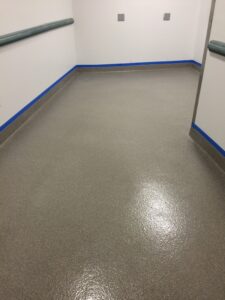
- Hygiene: In commercial and industrial settings, cleanliness and hygiene are paramount. Coving creates a seamless transition between the wall and the floor, preventing dirt, debris, and moisture from getting trapped in the corners. This makes it easier to maintain a clean and hygienic environment.
- Durability: Commercial and industrial floors are subjected to high levels of wear and tear, and coving can help protect the floor from damage caused by foot traffic and equipment. Coving is typically made of materials resistant to impact, chemicals, and abrasions, making it a durable and long-lasting flooring feature.
- Safety: Coving can also improve workplace safety by creating a visible boundary between the wall and the floor. This can help prevent slips, trips, and falls, resulting in serious injuries.
- Aesthetics: Coving can also enhance the floor’s appearance by creating a clean, seamless finish. This can contribute to a professional and polished commercial or industrial space look.
- Compliance: Certain industries, such as the food and beverage industry, have strict regulations regarding hygiene and sanitation. Coving is required to comply with these regulations, ensuring that the workplace meets industry standards and regulations.
Stonhard – What is Floor Coving?
Why Coving Is Important for Commercial and Industrial Floors
Degafloor coving Commercial kitchen, Flooring, Kitchen flooring
Why Coving Is Important for Commercial and Industrial Floors
Commercial Kitchen with Flash Coving – Sprague Floor
What Is Floor Coving and Why Do I Need It? – Florock
Commercial vinyl, Borders, features and coving, Fitting cove skirting
ECTR-COVE-EPOXY COVING MORTAR SYSTEM Archives – CTM Distribution
Why You Need to Consider Floor Coving for Hygiene Requirements
LVT vinyl floor coving – Commercial flooring accessories – Tarkett
The Benefits of Coved Flooring California Custom Coatings
Commercial vinyl, Borders, features and coving, Types of coving
Related Posts:
- Kitchen With Brown Tile Floor
- Textured Kitchen Floor Tiles
- Granite Kitchen Floor
- Classic Kitchen Floor Tile
- Red Tile Kitchen Floor
- Commercial Kitchen Floor Drain Grates
- Kitchens With White Wood Floors
- Cream Kitchen With Wooden Floor
- Checkerboard Kitchen Floor Tile
- White Kitchen Flooring Options
Introduction to Kitchen Floor Coving
Kitchen floor coving is one of the most popular choices for kitchen floor covering. It is not only attractive, but also extremely durable and easy to maintain. Kitchen floor coving is available in a wide variety of materials, colors and textures, so it is easy to find a style that complements any kitchen decor. In addition, kitchen floor coving is relatively inexpensive compared to other types of floor coverings. This article will provide an overview of the advantages and disadvantages of kitchen floor coving, as well as a few tips on how to install it.
Advantages of Kitchen Floor Coving
One of the main advantages of kitchen floor coving is its durability. It is made from high-quality materials that are designed to withstand heavy traffic and wear and tear. Kitchen floor coving can also be easily cleaned with regular vacuuming and spot cleaning. Additionally, it can be installed quickly with minimal effort and can last for many years with proper care.
Another advantage of kitchen floor coving is its stylish look. It comes in a variety of styles and colors, so it is easy to find a style that complements any kitchen decor. In addition, kitchen floor coving can be used to create a unique design that reflects your own personal taste.
Finally, kitchen floor coving is relatively inexpensive compared to other types of floor coverings. It is also easy to install and can be done by almost anyone with minimal tools and supplies.
Disadvantages of Kitchen Floor Coving
One of the main disadvantages of kitchen floor coving is its lack of insulation. Because it is not made from insulating material, it may not be an ideal choice for kitchens located in colder climates. Additionally, some people may find the texture or pattern of kitchen floor coving unappealing or too plain.
Another disadvantage of kitchen floor coving is that it can be difficult to repair if it becomes damaged or worn over time. Unlike other types of floor coverings, kitchen floor coving cannot be easily replaced due to its unique shape and design. Additionally, some people may find the installation process difficult or time-consuming.
Tips for Installing Kitchen Floor Coving
If you are considering installing kitchen floor coving, there are a few tips that can help make the process easier and faster:
1. Measure your kitchen accurately before purchasing any materials so you know exactly how much you need.
2. Purchase all necessary tools and supplies before starting the installation process.
3. Make sure to use high-quality adhesives for installing the coving onto the subfloor or wall surfaces.
4. Clean and dry all surfaces before applying any adhesives or grout.
5. Carefully follow all manufacturer’s instructions when installing kitchen floor coving.
6. Allow enough time for the adhesive or grout to completely dry before walking on the kitchen floor coving.
7. Use mats or rugs in areas where there will be heavy traffic to protect the surface of the coving from wear and tear over time.
8. Regularly vacuum and spot clean the surface of the coving to keep it looking its best over time.
FAQs About Kitchen Floor Coving
Q: Is kitchen floor coving easy to install?
A: Yes, kitchen floor coving is relatively easy to install with minimal tools and supplies required for the job. However, it’s important to read all manufacturer’s instructions carefully before beginning the installation process and allow enough time for all adhesives or grouts to dry before walking on the surface of the coving after installation.
Q: How durable is kitchen floor coving?
A: Kitchen floor coving is very durable due to its high-quality materials that are designed to withstand heavy traffic and wear and tear over time. However, it’s important to use mats or rugs in areas where there will be heavy traffic to protect the surface from damage over time. Additionally, regular vacuuming and spot cleaning will help keep it looking its best over time as well.

